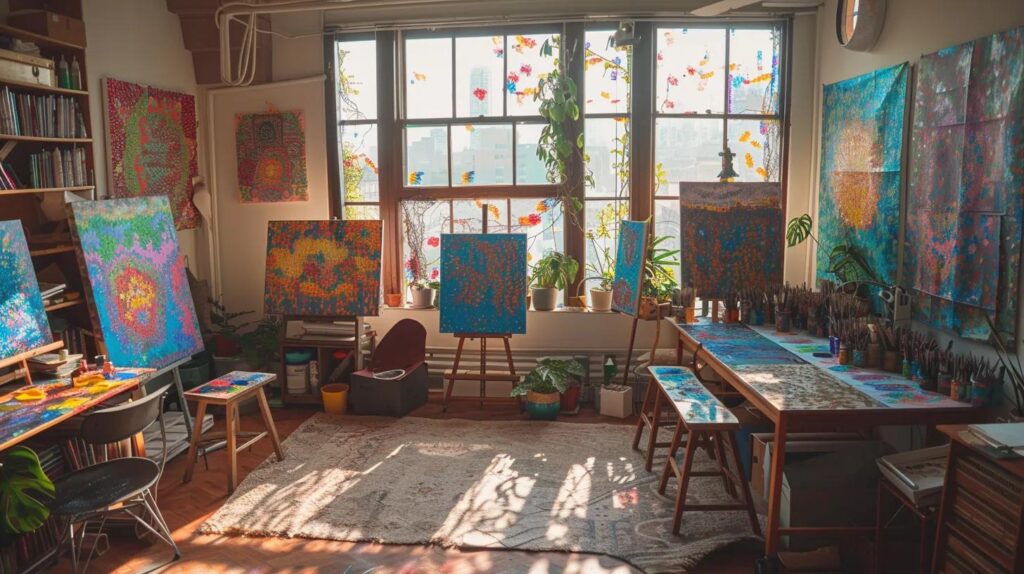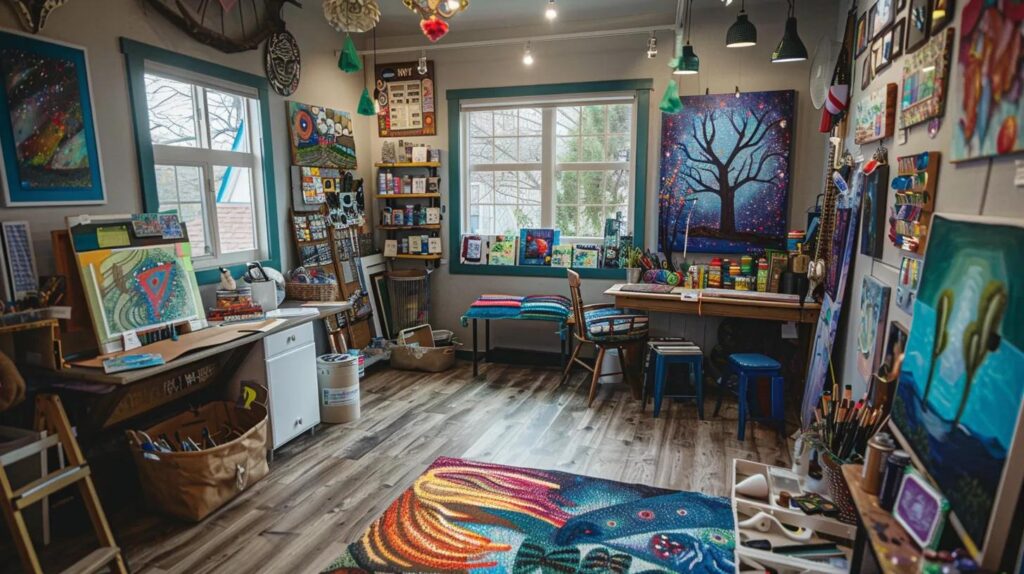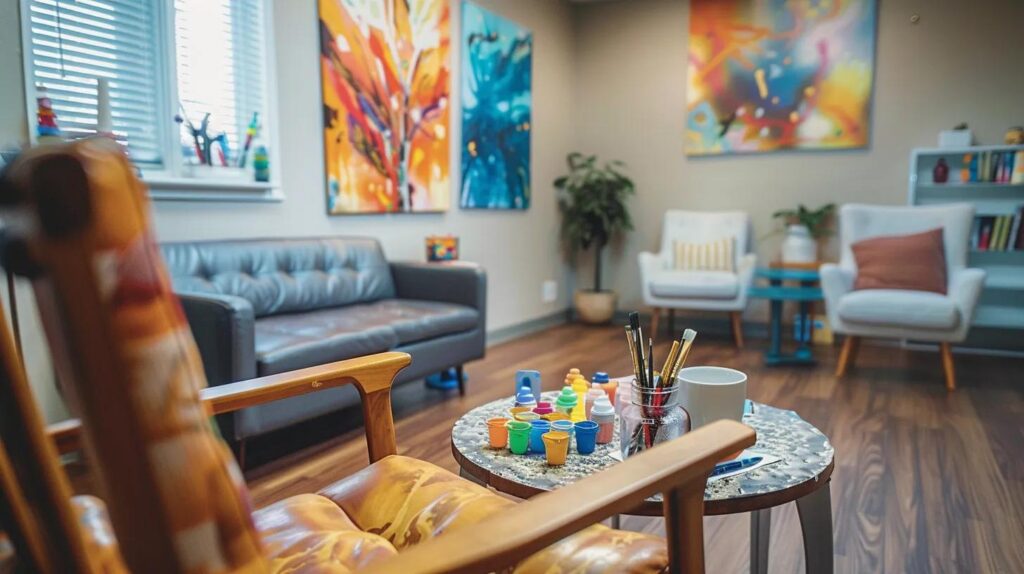
Adult Coloring Pages Enhance Art Therapy Benefits
Key Takeaways
- Art therapy for adults integrates creative expression with psychological healing using structured techniques led by trained professionals.
- Adult coloring pages serve as a simple yet powerful gateway to reducing stress, enhancing mindfulness, and stimulating non-verbal communication.
- Core art therapy methods, including drawing, painting, sculpting, collage, and journaling, help adults process trauma, build self-esteem, and improve communication.
- Integrating coloring pages into daily routines facilitates continuous engagement in art therapy, supporting emotional regulation and cognitive well-being.
Understanding Art Therapy for Adults and Its Core Principles

Art therapy for adults is a structured form of creative expression that uses art-making to process emotions, reduce stress, and foster personal growth. In this context, creative expression means using art as a deliberate process to externalize internal experiences and understand emotional states. Trained art therapists provide safe environments, guided techniques, and support, allowing patients to explore subconscious thoughts non-verbally.
This therapeutic method treats art as an alternative language that transcends verbal limitations. It draws on psychological and cognitive behavioral theories that validate non-verbal expression, with research showing decreases in cortisol levels and increased serotonin production during sessions. Unlike general arts and crafts that emphasize skill or aesthetics, art therapy focuses on healing, emotional regulation, and self-discovery. Its core principles are supported by neuroscience and qualitative research, which highlight alternative pathways to communication and improved brain function.
Exploring How Adult Coloring Pages Enhance Art Therapy Benefits
adult coloring pages provide an accessible introduction to art therapy by offering a non-intimidating medium. Their structured format gives individuals a clear starting point that reduces the pressure to create something entirely original, allowing for personal color choices and decoration. This process encourages mindfulness and lowers stress levels, as the repetitive motion of coloring can induce meditative states and calm the nervous system.
The impact of color choice is also significant; color psychology research indicates that specific hues can evoke feelings of serenity, energy, or uplifted mood, facilitating non-verbal communication of emotions. As individuals complete a coloring page, they naturally enhance their focus and concentration—benefits that mirror the structured techniques of broader art therapy practices. Furthermore, because coloring pages are simple and accessible regardless of artistic skill, they serve as a low-barrier entry point into the therapeutic process.
Key Benefits of Engaging in Art Therapy for Adults

Art therapy engages both psychological and cognitive processes. Its primary benefits include enhanced self-discovery and insight, allowing individuals to uncover hidden emotions and gain clarity about their personal challenges. This self-reflection builds a deeper understanding of identity and emotional landscapes.
Moreover, art therapy helps develop healthy coping mechanisms. Regular sessions have been linked to improved stress reduction and better emotional regulation. The process of art-making, whether through drawing or coloring, provides a safe way to explore traumatic memories without the need for explicit verbal recounting, easing the burden of painful experiences.
Another benefit is the improvement of non-verbal communication skills. For those who find traditional verbal therapy challenging, art therapy offers an alternative way to express complex feelings. Additionally, the completion of an art project or coloring page can boost self-esteem and confidence, as the finished work acts as a tangible marker of personal progress and growth.
Common Techniques and Approaches in Art Therapy for Adults
Several techniques are central to art therapy for adults. Traditional methods such as drawing and painting allow individuals to connect with their emotional states through the use of colors, shapes, and lines. Studies have shown that engaging in these activities can reduce anxiety significantly by providing an immediate channel for expression.
Sculpting and clay work add a tactile dimension to therapy. Working with clay not only improves fine motor skills but also serves as a metaphor for shaping one’s emotional life. Similarly, collage and mixed media enable participants to experiment with textures and images, helping those who struggle with verbal expression create a coherent narrative of their internal experiences.
Adult coloring pages complement these methods by simplifying the process. They eliminate the initial barrier of creation, allowing patients to focus on emotional processing and reflection. Journaling, when paired with visual art, further reinforces these benefits by coupling the visual with verbal insights, thereby strengthening non-verbal communication skills.
Getting Started With Art Therapy for Adults

The first step toward art therapy is finding a qualified therapist experienced in treating adults. These professionals can customize sessions to align with individual emotional needs and life circumstances, ensuring that therapy is both safe and effective. In an initial session, clients will typically discuss goals, techniques, and the overall therapeutic process, which helps establish trust and clear objectives.
Setting personal goals is crucial for tracking progress in art therapy. Whether the aim is to reduce stress, bolster self-esteem, or improve communication skills, having clear objectives allows clients to measure the benefits over time. Incorporating simple activities like coloring into daily routines also supports ongoing mental wellness. For those who feel insecure about their artistic abilities, art therapy emphasizes that creativity is less about technical skill and more about honest personal expression.
The Intersection of Adult Coloring Pages and Broader Art Therapy for Adults
Adult coloring pages play a unique role by easing individuals into the broader practice of art therapy. They reduce inhibition and provide an entry point for further creative exploration. Therapists often use clients’ color choices and decoration patterns to initiate discussions about underlying emotional states and thoughts.
Thematic coloring—designed for addressing specific issues like stress, grief, or celebrating personal milestones—can personalize the therapeutic experience. This method builds a bridge between structured clinical sessions and personal artistic expression at home. As patients gain confidence with coloring, many naturally progress to trying more complex creative activities such as free-form painting or mixed media collage. Research supports that ongoing engagement with simple art forms like coloring leads to gradual improvements in mood, attention, and overall mental clarity.
Table of Common Art Therapy Techniques and Their Benefits
Before final considerations, the table below summarizes various art therapy techniques for adults, their primary benefits, and application insights:
| Technique | Primary Benefit | Application Example | Research-Based Insight |
|---|---|---|---|
| Drawing and Painting | Reduces anxiety and promotes expression | Sketching emotions during stressful periods | Studies show up to 30% anxiety reduction |
| Sculpting and Clay | Enhances tactile stimulation and emotional molding | Using clay to represent personal growth | Encourages transformation through sensory input |
| Collage & Mixed Media | Facilitates narrative reflection through imagery | Assembling images to depict personal history | Boosts cognitive integration and memory |
| Adult Coloring Pages | Improves mindfulness and reduces self-criticism | Coloring pre-drawn designs in therapy sessions | Enhances focus and lowers stress |
| Journaling | Strengthens verbal processing alongside art | Writing reflections after completing an art piece | Improves both verbal and non-verbal communication |
This table underscores how different techniques can target specific therapeutic outcomes. Integrating multiple forms of creative expression may yield considerable improvements in mental health, offering diverse modalities for healing and self-discovery.
Frequently Asked Questions
Q: How does art therapy for adults promote emotional healing? A: It creates a safe, non-verbal environment for individuals to express emotions, process trauma, and develop effective coping strategies.
Q: What role do adult coloring pages play in art therapy? A: They ease individuals into therapy by lowering inhibitions, promoting mindfulness, and offering a structured yet flexible medium for self-expression.
Q: Can art therapy improve communication skills in adults? A: Yes, by using non-verbal methods such as drawing and collage, art therapy helps convey complex emotions and enhances interpersonal communication.
Q: How do art therapists tailor sessions for adult clients? A: They assess each client’s emotional needs, establish personalized goals, and select appropriate techniques to ensure a supportive and safe therapeutic process.
Q: Are there scientific studies supporting these techniques? A: Numerous studies have indicated benefits such as reduced cortisol levels, improved neural connectivity, and enhanced cognitive function through regular art therapy.
Final Thoughts
Art therapy for adults, enhanced by tools like adult coloring pages, offers a structured path to emotional healing and personal growth. By leveraging techniques such as drawing, sculpting, and mixed media, it creates non-verbal avenues for expressing complex emotions and processing difficult experiences. The simplicity and accessibility of adult coloring pages help reduce inhibition and promote mindfulness, making therapy approachable even for beginners. As these creative practices become part of daily routines, they can sustain mental clarity and foster healthier coping strategies.
